Pineapple cultivation - Preparing for the first harvest. |ENG||ESP|
English version.
Hey friends, I had a couple of days without posting here, and this time I'm back with an incredible post about a new pineapple crop that is about to be harvested, a really incredible experience and I love it very much. I had come here before but had not given it the proper attention, this time I asked absolutely everything about growing pineapples, the amount of money you need to invest to make it commercial, how to fertilize, how to spray and protect against pests.
Pineapple is one of the most profitable crops for this semi-arid zone, because there is not much water and the rains are scarce, this crop is really resistant to extreme drought and does not require much fertilizer.
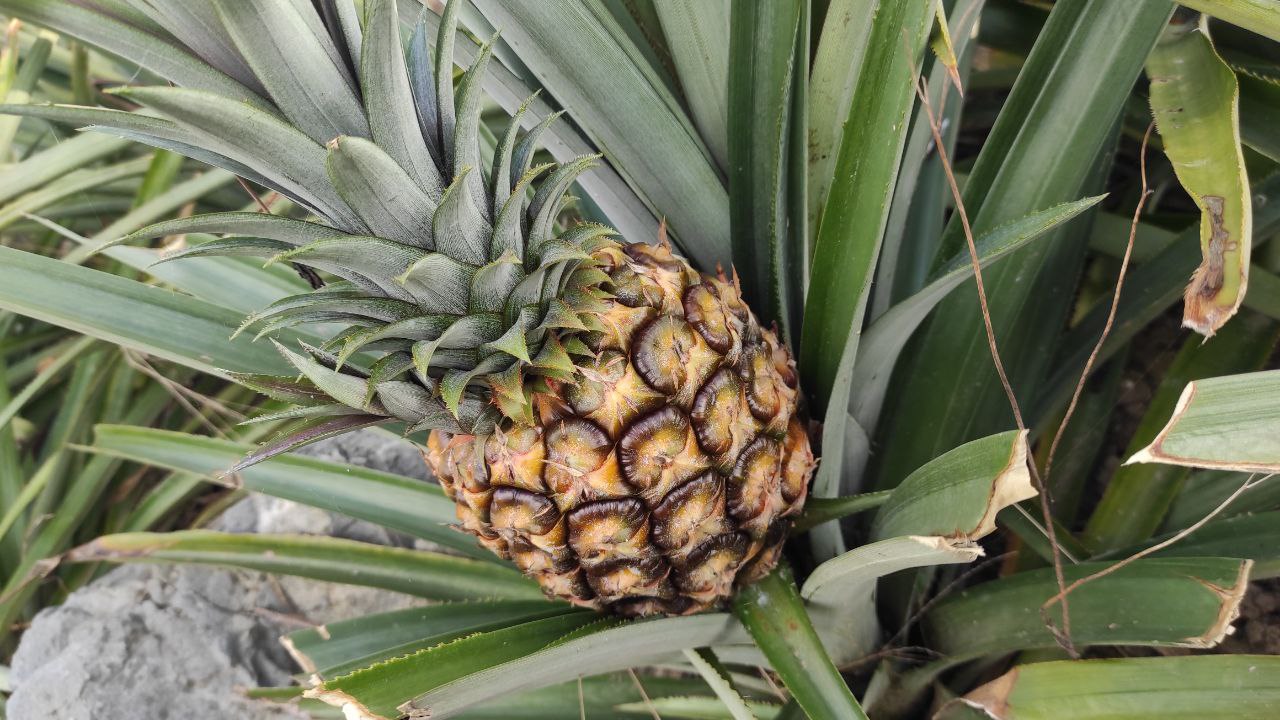
Waiting period for the first flowering and harvest:
The period to obtain the first harvest is 9-12 months, everything depends on the rain, if it rains at least 2 or 3 times during the year, the plants will grow much faster, besides that, it depends on the soil, that is to say how many nutrients are in it, and the formula 15-15-15 that we must add a few weeks after transplanting the plant and after 7-8 months. If we manage to control the irrigation and we do not do it as in this method, which is to wait for the rain, the period is 10 months.
It is important to know that if we do not add fertilizers and the soil lacks nutrients the waiting time can be 2 years.
When the plants are big enough, we add a fertilizer or hormone that here they call it (carbide), this makes the plant pollinate and fertilize the embryo in order to obtain a flower and then from that flower the fruit.
It is very difficult to see a pineapple flower if you are a tourist observing for the first time, but the people who work in the cultivation know when the plant already has its flower, which starts very small red inside the leaves of the plant and then with a stem comes out upwards.

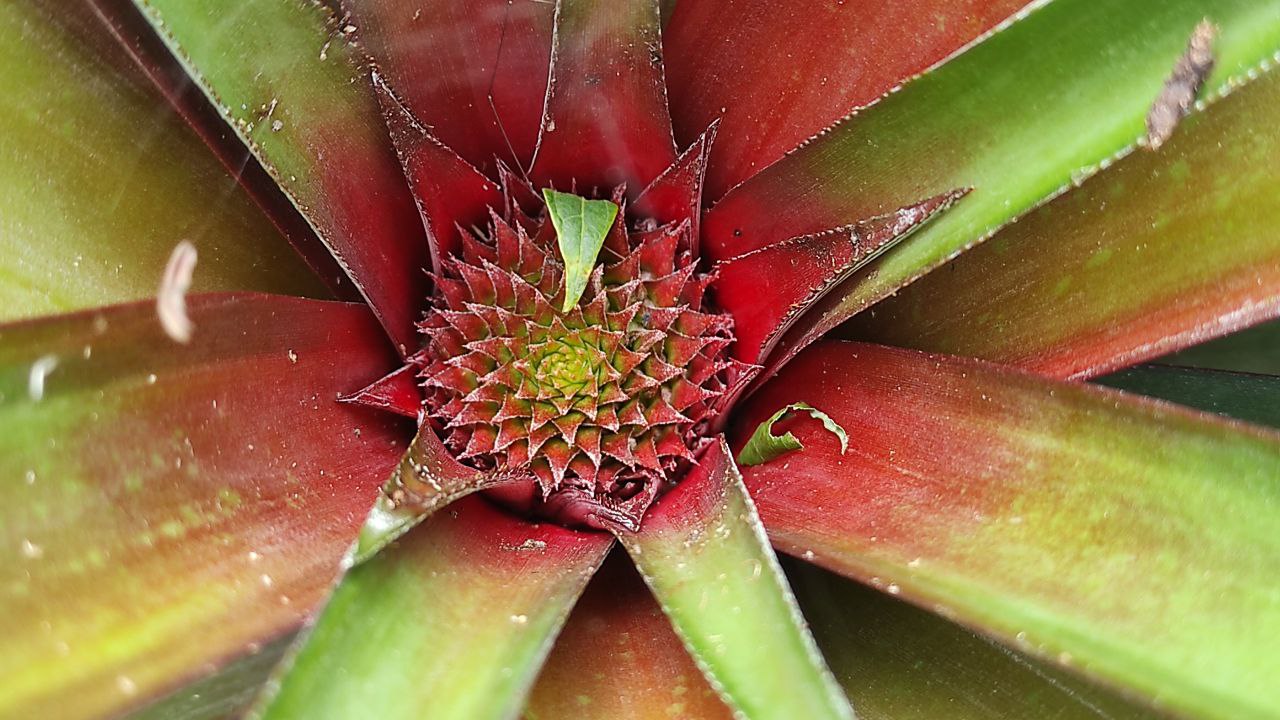



The life span of the plant can vary between 4-5-8 years, depending on the treatment and care that we give them, besides that the plant can give 3 harvests per year, or 1 pineapple every 4 or 5 months depending on the rainy season and if we accelerate the cutting of the fruit.
The fruits are usually reddish when the flower comes out with the stem, changes to a purple-green color, then a bluish-green color and finally turns orange, when the fruit is ripe. Ripener can be added to speed up the process and cut much earlier.
A plantation of 10,000 pineapples does not require much fertilizer, probably need 4 bags of formula 15-15-15 or 200kg that can be applied in two different periods, here do not apply phosphorus or nitrogen as the soil has plenty. Studies have been done and it has decomposer bacteria and some that assimilate nitrogen, although I believe that a better fertilizer treatment can make the plants bigger and more productive, however due to the long waiting period it is not very profitable to do so.
Fumigation is not a problem because this area is free of pests, however they use insecticide repellents against the so-called "Elephant Coconut" that eats the fruit.
Birds are the biggest problem, so they place scarecrows around the crop to scare them away.

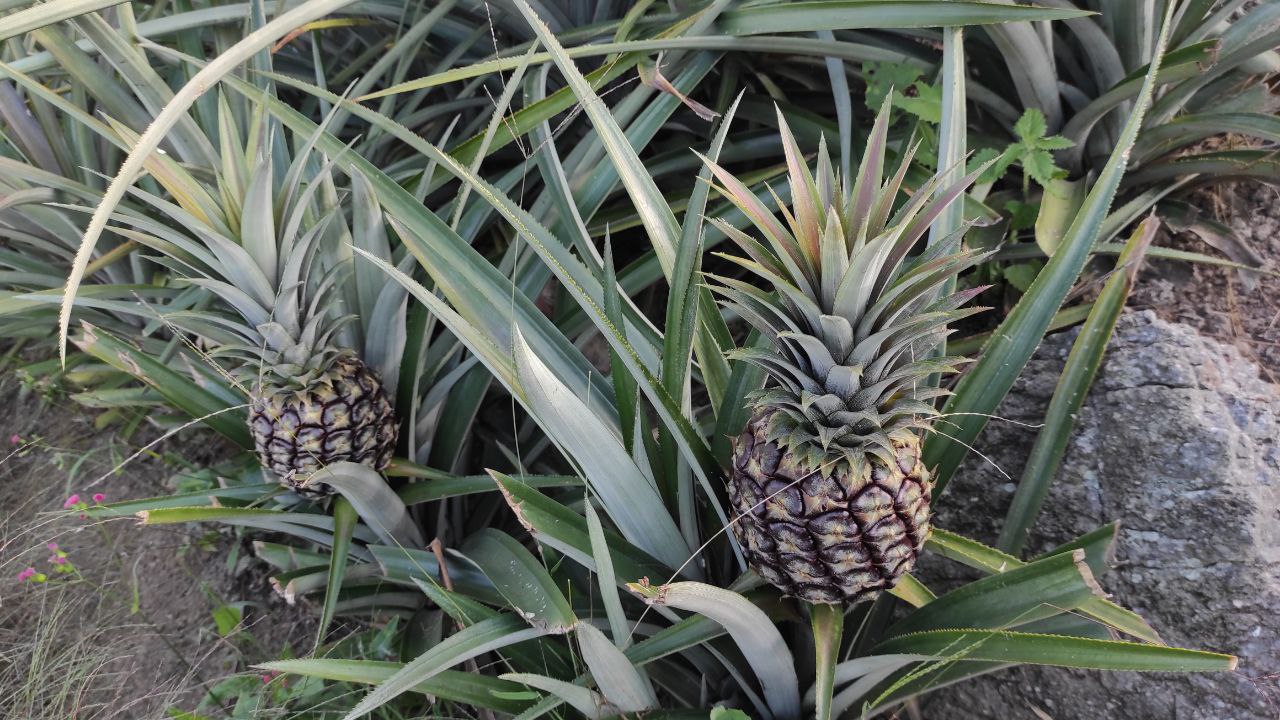
.jpg)



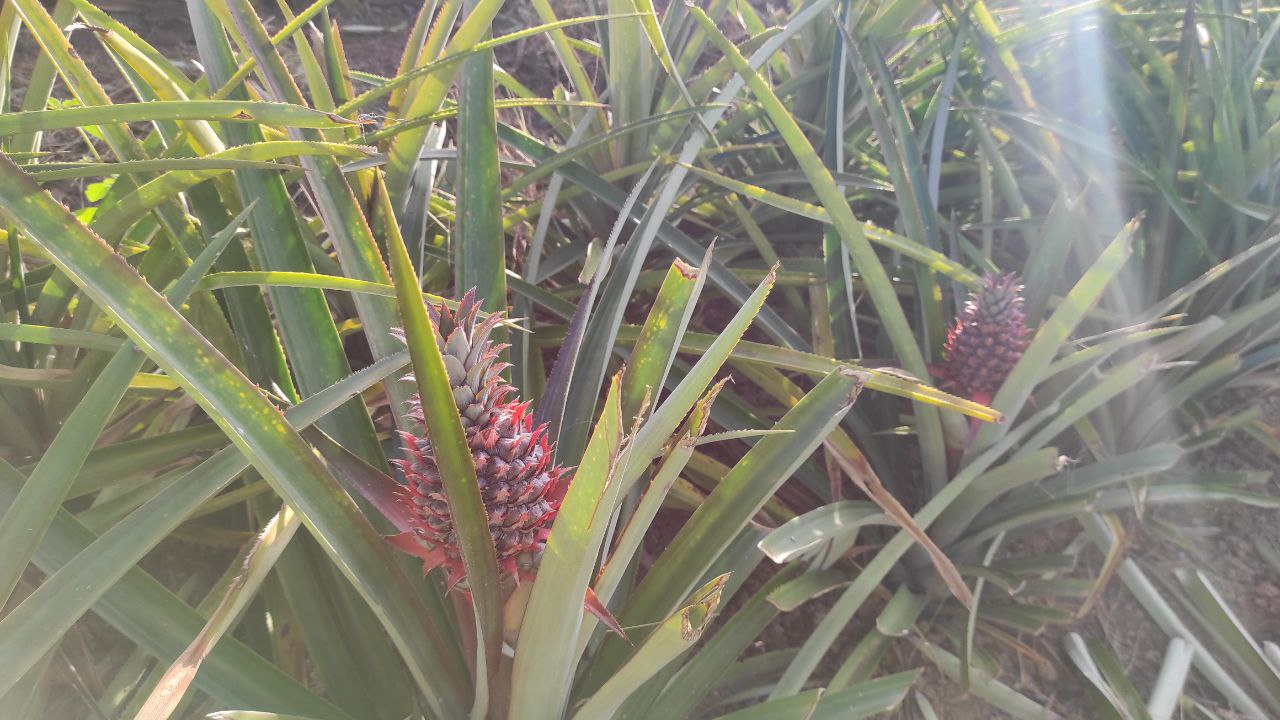
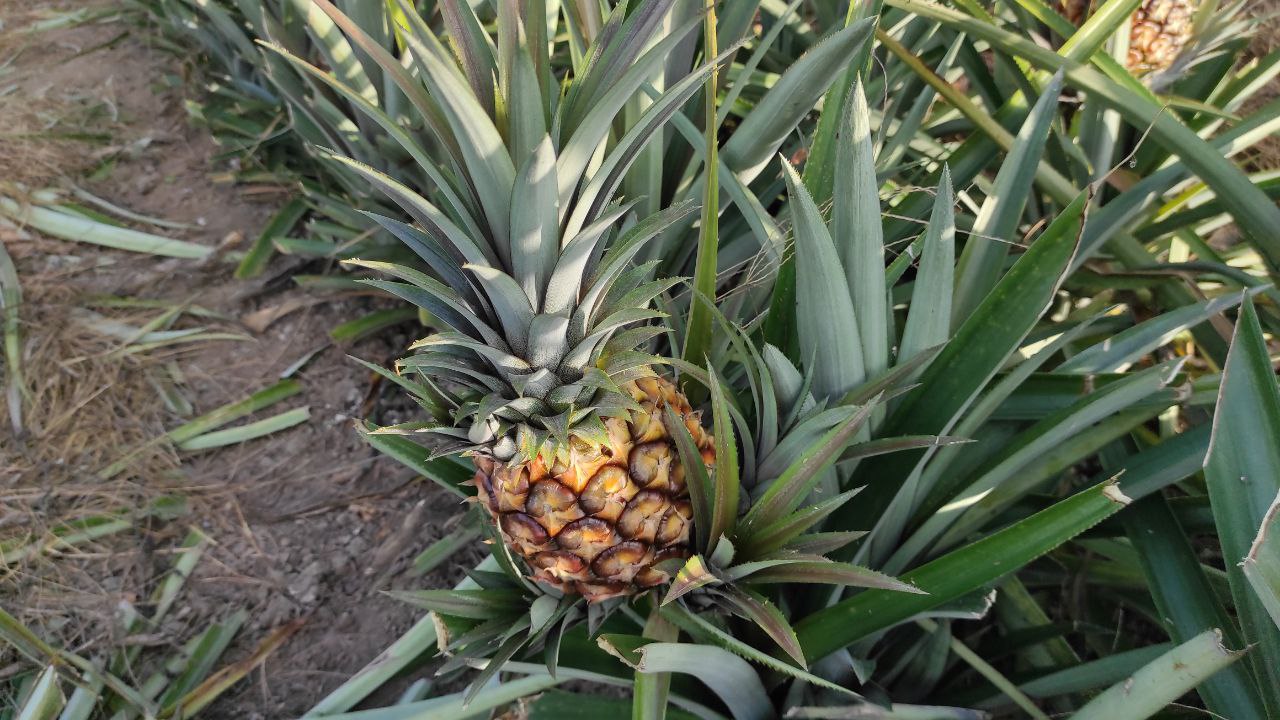
How plants reproduce:
Its reproduction is asexual, since under the fruit or around the stem grow children, these children are genetically identical to the mother plant. At the moment of cutting the fruit we must do it carefully to leave the offspring there and that these continue to grow so that later they can be transplanted.
Some say that planting the bud of the fruit can give a fruit later, it is true but this is the best quality fruit, since the bud is a small plant that needs to grow.
For this reason pineapple is a very profitable crop here, as there is no need for certified seed to guarantee a good yield.
A single plant can produce up to 3-4 or 5 offspring depending on its genetics so we can triple the amount of plants in 1 year.




There is a variety of pineapple different from the one we know traditionally, it is a red pineapple and it is planted in the Andes of my country, it is known as Andean Pineapple or Capachera, it is larger and a little elongated. Being much sweeter, it is used to obtain pineapple liquor and a good ethyl alcohol is distilled from it.

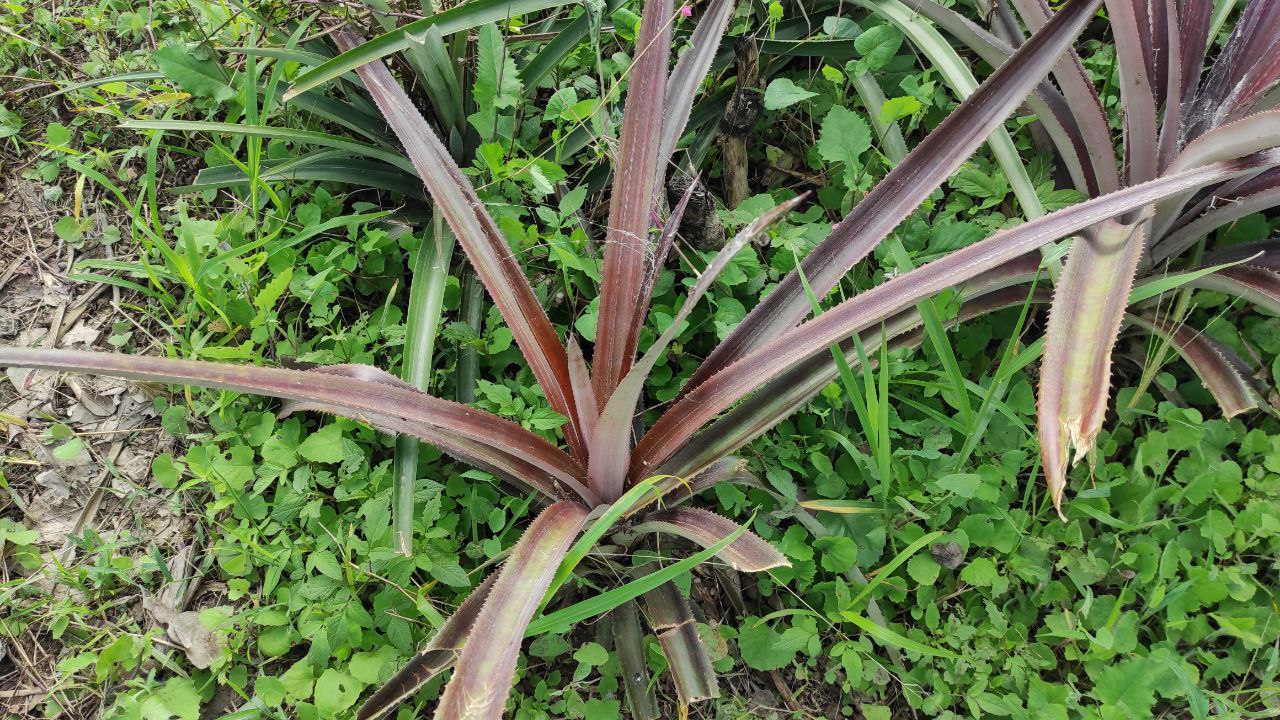


Weed maintenance:
It is important that the plants have at least 1 meter of separation between rows so that they can develop in a good way and grow. It is usually 100% important to keep them free of weeds, since they need a lot of sunlight, and weeds do not allow this to happen, besides absorbing the nutrients close to the roots of the plants.
The size of a clean pineapple is twice the size of pineapples that are completely abandoned.
Usually herbicides do not damage the leaves of the plant, which is an excellent option when there are too many weeds, however this can deteriorate the soil and must be done with caution.
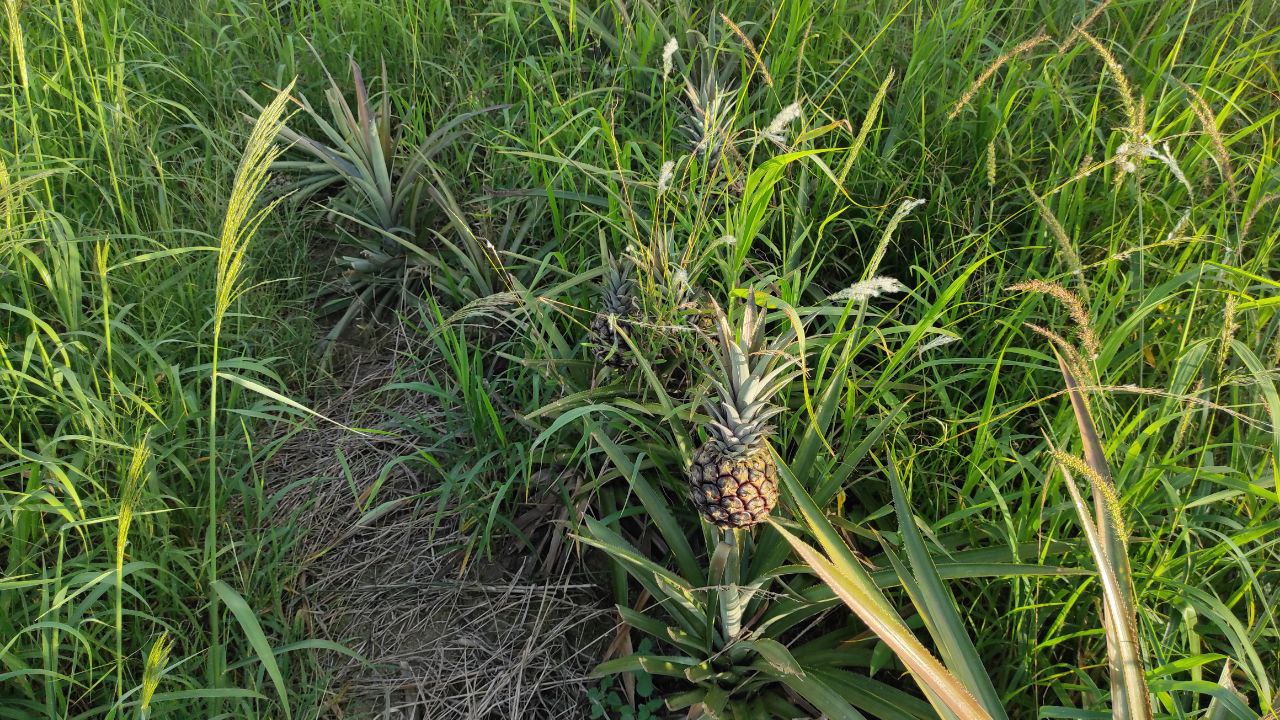



And finally this is a crop that adapts to any type of climate, except those with very low temperatures, it is typical of tropical climates.
At the moment of transplanting they are almost dry and very yellow, but as soon as they have a little water they turn green almost immediately. They are usually planted in mountains or soft soils, in any case they are well adapted, I have seen some plants next to giant stones and on rocks growing in perfect condition.


This was a small tour through a plantation of 60,000 pineapple plants of different ages, although I focused on the youngest ones.
This is what I learned and I hope you like it, see you in the next one.

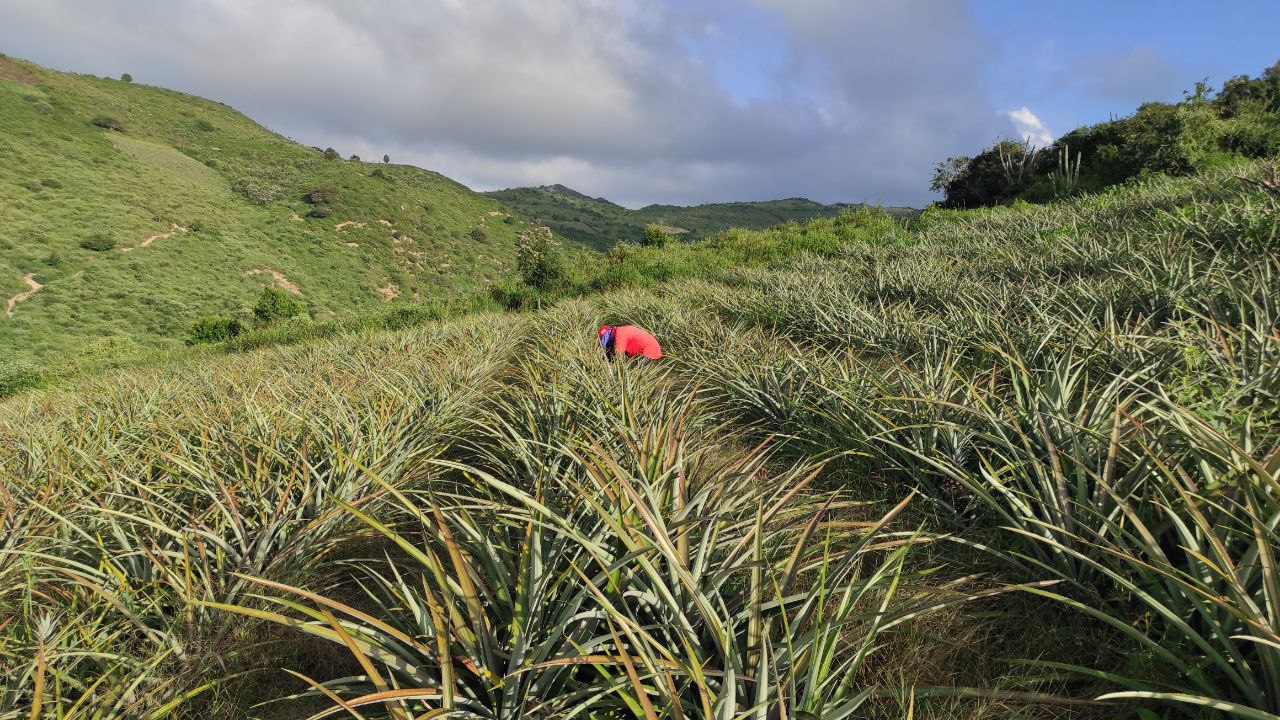

Versión en español.
Hey amigos como están?, tenia un par de días sin publicar aquí, y esta vuelvo con un increíble post sobre un cultivo de piñas nuevo que esta a punto de ser cosechado, una experiencia realmente increíble y me encanta muchísimo. Ya había venido en otras oportunidad pero no le había dado la atención adecuada, esta vez pregunte absolutamente todo sobre el cultivo de piñas, la cantidad de dinero que se necesita invertir para hacerlo comercial, la manera de fertilizar, de fumigar y proteger contra plagas.
El cultivo de piña es uno de los mas rentables para esta zona semi-árida, debido a que no hay mucha agua y las lluvias son escasas, este cultivo es realmente resistente a la sequia extrema y no requiere de mucho abono.

Periodo de espera para la primera floración y cosecha.
El periodo para obtener la primera cosecha es de 9-12 meses, todo deponte de la lluvia, si en el año llueve al menos 2 o 3 veces, las plantas crecerán mucho mas rápido además de eso, depende de la tierra, es decir de cuantos nutrientes allá en ella, y la formula 15-15-15 que debemos agregar unas semanas después de trasplantar la planta y al cumplir 7-8 meses. Si logramos controlar el riego y no lo hacemos como en este método, que es esperar la lluvia, el periodo es de 10 meses.
Es importante saber que si no agregamos abonos y la tierra carece de nutrientes el tiempo de espera puede ser de 2 años.
Cuando las plantas son lo suficientemente grandes, se agrega un fertilizante u hormona que aquí le llaman (carburo), esto hace que la planta se polinice y fertilicé el embrión para poder obtener una flor y luego de esa flor el fruto.
Es muy difícil ver una flor de piña si eres un turista observando por primera vez, pero las personas que trabajan en el cultivo saben cuando la planta ya tiene su flor, que comienza roja muy pequeña dentro de las hojas de la planta y luego con un vástago sale hacia arriba.





El periodo de duración de la planta puede variar entre los 4-5-8 años, depende del tratamiento y cuidados que les demos, además de eso la planta puede dar 3 cosechas al año, ósea 1 piña cada 4 o 5 meses dependiendo del tiempo de lluvia y si aceleramos el corte del fruto.
Los frutos usualmente son rojizos cuando la flor sale con el vástago, cambia a color verde-purpura, luego un color verde azulado y finalmente se torna naranja, cuando esta maduro el fruto. Se le puede agregar madurador para acelerar el proceso y cortar mucho antes de tiempo.
Un plantación de 10.000 piñas no requiere de mucho abono, probablemente necesite 4 sacos de formula 15-15-15 es decir 200kg que pueden ser aplicados en dos periodos distintos, aquí no aplican fosforo ni nitrógeno ya que la tierra posee en abundancia. Se han hecho estudios y tiene bacterias descomponedores y algunas que asimilan nitrógeno, aunque creo que un mejor tratamiento de abono las plantas pueden ser mas grandes y productivas, sin embargo por el largo periodo de tiempo de espera no es muy rentable hacerlo.
La fumigación no es un problema por que esta zona esta libre de plagas, sin embargo utilizan insecticidas repelentes contra el llamado "Coco elefante" que come el fruto.
Los pájaros son el mayor problema, por lo cual colocan espantapájaros al rededor del cultivo para ahuyentarlos.


.jpg)





Como es la reproducción de las plantas.
Su reproducción es asexual, ya que debajo del fruto o alrededor del vástago crecen hijos, estos hijos son genéticamente idénticos a la planta madre. Al momento de cortar el fruto debemos hacerlo con cuidado para dejar los hijos allí y que estos sigan creciendo para luego poder trasplantarlos.
Algunos dicen que sembrar el cogollo del fruto puede dar un fruto luego, es cierto pero este es el fruto de mejor calidad, ya que el cogollo es una pequeña planta que necesita crecer.
Por este motivo la piña es un cultivo muy rentable aquí, ya que no se necesita de semilla certificada que garantice un buen rendimiento.
Una sola planta puede producir hasta 3-4 o 5 hijos dependiendo de su genética por lo cual podemos triplicar la cantidad de plantas en 1 año.




Hay una variedad de piña distinta a la que conocemos tradicionalmente, es una piña roja y se siembra en los Andes de mi país, se le conoce como Piña Andina o Capachera es de un mayor tamaño y es un poco alargada. Al ser mucho mas dulce se utiliza para obtener licor de piña y se destila un buen alcohol etílico de ella.




Mantenimiento de malezas.
Es importante que las plantas tengan al menos 1 metro de separación entre surcos para que puedan desarrollarse de una buena manera y crecer. Usualmente es 100% importante mantenerlas libres de malezas, ya que necesitan mucha luz solar, y la maleza no deja que esto sea así, además de absorber los nutrientes cercanos a las raíces de las plantas.
El tamaño de una piña limpia es 2 veces mayor al de piñas que están en completo abandono.
Usualmente los herbicidas no dañan las hojas de la planta lo cual es una excelente opción cuando veamos que las malezas son demasiadas, sin embargo esto puede deteriorar el suelo y hay que hacerlo con precaución.




Y para finalizar este es un cultivo que se adapta a cualquier tipo de clima, excepto aquellos con temperaturas muy bajas, es típico de los climas tropicales.
Al momento de trasplantarlas están casi secas y muy amarillas, pero apenas tienen un poco de agua se tornan verde casi inmediatamente. Suelen sembrarse en montañas o terrenos suaves, en cualquier son bien adaptadas, he visto algunas plantas al lado de piedras gigantes y sobre peñascos creciendo en perfecto estado.


Este fue un pequeño recorrido por una plantación de 60.000 plantas de piña de diferentes edades, aunque me enfoque en las mas jóvenes.
Esto es lo aprendido y espero les guste, nos vemos en la proxima.



Ubicación en pinmapple / Location in pinmapple: [//]:# (!pinmapple 10.37150 lat -69.49454 long Pineapple cultivation d3scr)
Congratulations, your post has been added to Pinmapple! 🎉🥳🍍
Did you know you have your own profile map?
And every post has their own map too!
Want to have your post on the map too?
coma mucha piña primo, yo se porque se lo digo
Jajajajaja vitamina c sube las defensas, quiere piña primo? Cuantas le llevo